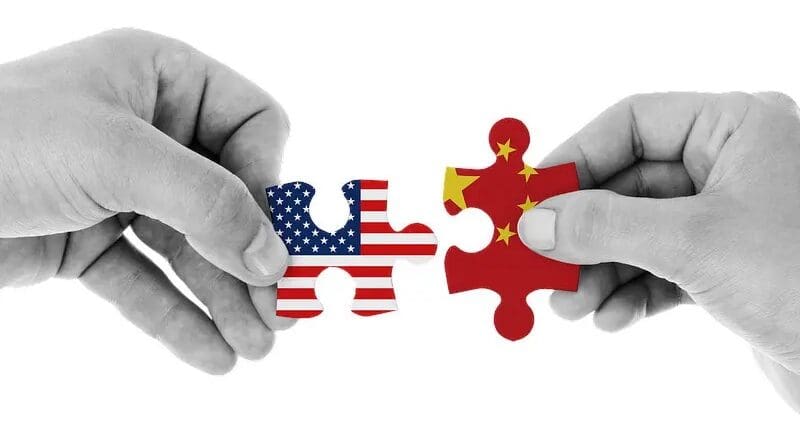Washington Won’t Chip Away At China’s Military With Semiconductor Sanctions – Analysis
By Gary Clyde Hufbauer and Megan Hogan*
In October 2022, the Biden administration introduced export controls on China, prohibiting the sale of cutting-edge semiconductor chips, the advanced equipment needed to manufacture them and semiconductor expertise from the United States. The controls are the Biden administration’s most serious attempt to undermine China’s military modernisation and the most damaging measures US President Joe Biden has taken against China.
Advanced semiconductors underpin everything from autonomous vehicles to hypersonic weapon systems. Chips are imperative to the defence industry and technologies of the future. By targeting this critical input, the Biden administration aims to freeze China’s semiconductor suite at 2022 levels and impede its military development.
China will probably struggle to maintain its rapid advances in artificial intelligence, quantum and cloud computing without access to US technology and expertise. Chipmakers like the Semiconductor Manufacturing International Corporation — China’s largest logic chip producer — will lose access to machine maintenance and equipment replacement under the new controls.
US chip equipment suppliers like Lam Research, Applied Materials and KLA Corporation have suspended sales and services to Chinese chipmakers while ASML Holding, a Netherlands-based supplier, told its US staff to stop servicing Chinese customers until further notice.
The new controls exploit China’s weaknesses in developing talent and research. They require all US citizens, residents and green card holders — including hundreds of ethnic Chinese educated and trained in the United States — to seek permission from the US Department of Commerce to work in Chinese fabrication plants. Since such permission is unlikely, US citizens working at Chinese semiconductor companies will be forced to sacrifice their citizenship or their job. Most will have to give up their current jobs. Indeed, Yangtze Memory Technologies Corp has already asked core US staff to leave the company.
Despite the bleak short-term outlook, it is wrong to assume that US controls will hobble China for years. In the case of nuclear weapons, significant resources were poured into acquiring bomb technology once political leaders decided that they were essential for national defence. That effort inevitably starved other sectors but more often than not successfully delivered nuclear weapons programs.
Now that advanced semiconductors are seen as essential to national defence, Beijing is adopting the ‘whole of the nation’ approach and investing national resources into the industry. Many engineers and computer scientists are likely to be assigned to semiconductor design and manufacture, assisted by espionage against US, South Korean, Taiwanese, Japanese and European chip firms.
The export controls won’t cripple the Chinese military. According to a 2022 RAND Corporation report, China’s military systems rely on older, less sophisticated chips made in China on which US export controls will have no affect. If China needs more advanced chips for AI-driven weapons systems, it can likely produce them, albeit at a very high cost. Many semiconductor industry experts agree that China has the technical capability to produce cutting-edge chips yet lacks the commercial capability to scale up production. This means that the US ban will have less effect on weapons systems, instead delaying the rollout of civilian applications, such as autonomous vehicles.
Nor will US semiconductor firms emerge from the sanctions unscathed, given many have China as their largest market. China comprises 27 per cent of sales at Intel, 31 per cent at Lam Research and 33 per cent at Applied Materials. Both Applied Materials and Nvidia expect the new export controls to cut US$400 million (6 per cent and 7 per cent, respectively) from next quarter’s sales. Lam Research — one of Yangtze Memory Technologies Corp’s largest suppliers — expects the controls to cut a whopping US$2.5 billion (15 per cent) from 2023 sales.
These dramatic cuts come at a particularly difficult time for the US semiconductor industry, which is experiencing falling revenue and increased input costs. By one estimate, the damage US sanctions inflict on research and development and capital investment in the Western semiconductor industry ‘will exceed Washington’s modest subsidies for the chip industry by a factor of five or more’.
Tit-for-tat retaliation against Washington is not an option for China, given its heavy reliance on foreign technology. Any reciprocal measure would inflict more damage on China itself. Punishing US companies with big exposure in China — like Nike or Apple — would harm the Chinese labour market since those firms employ many Chinese citizens. Other foreign supply chains and Chinese businesses supplying Nike and Apple would also suffer.
Imposing export controls on products China dominates, like rare earths or pharmaceutical ingredients, would accelerate the US movement to ‘reshore’, onshore and ‘friend-shore’ manufacturing those products, as was the case with Japan in 2012.
Instead of overt retaliation, China will probably seek alternatives to US chip technology. But since alternatives are decades away, intellectual property theft and the nationalisation of foreign semiconductor firms could spike.
Whether US chip controls represent a stand-alone policy or foreshadow sanctions across a wider range of high technology sectors is unclear. In the run-up to the 2024 US presidential election, many Republicans will call for harsher controls. At his recent meeting with Chinese President Xi Jinping at the G20 summit, Biden sought to tamp down US–China hostilities. But unless he resists calls from the US ‘China hawks’, Biden could find himself dragged into a Second Cold War.
*About the authors: Gary Clyde Hufbauer is a non-resident Senior Fellow at the Peterson Institute of International Economics and Megan Hogan is a Junior Fellow at the Peterson Institute for International Economics.
Source: This article was published by East Asia Forum

